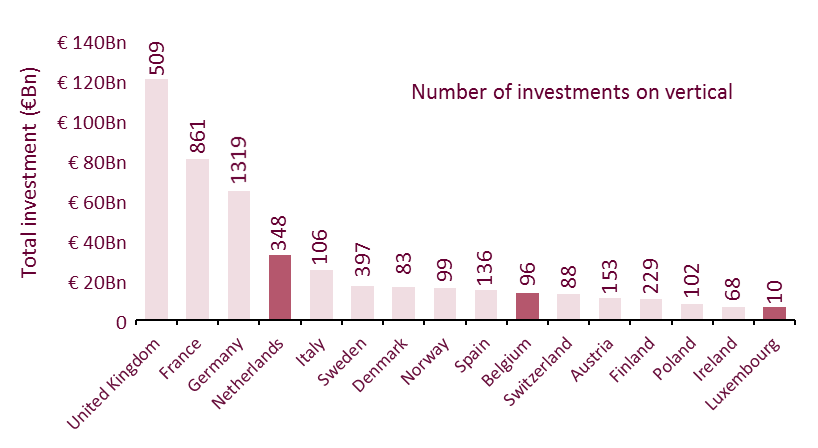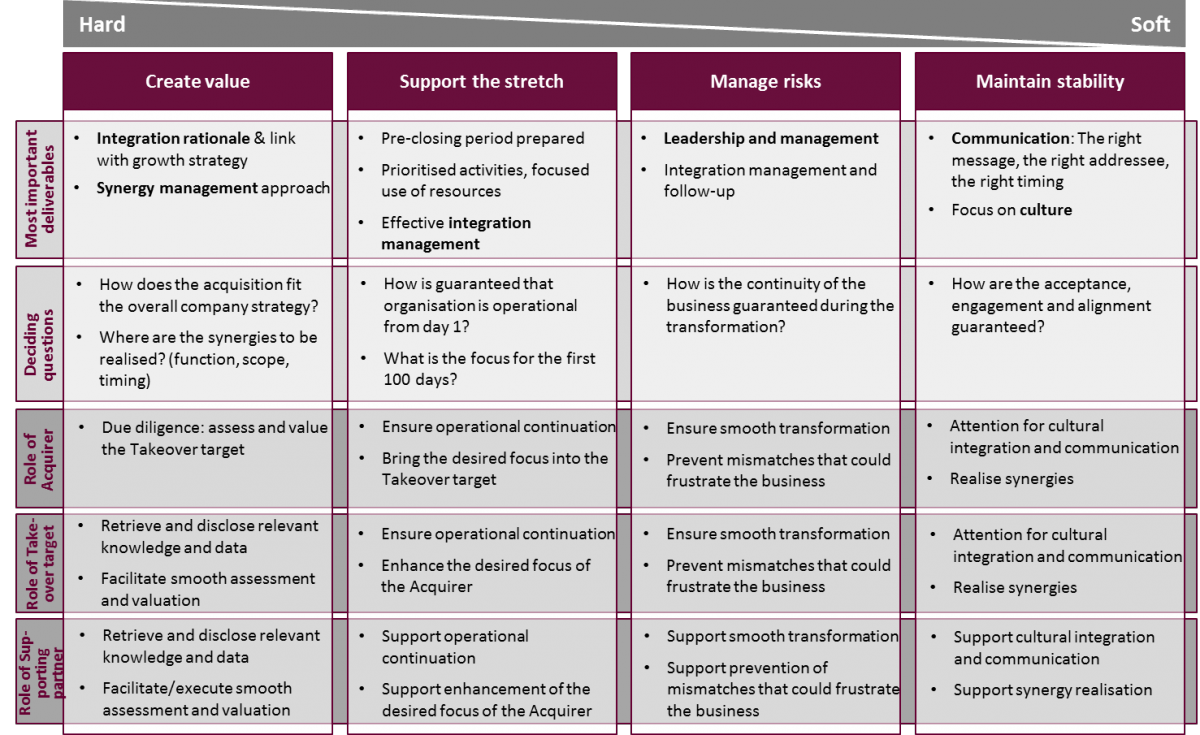Agentforce, the GenAI Agent by Salesforce

In the Dutch energy sector, mergers and acquisitions have been present already before the market liberalization, when small regional energy companies merged into larger energy companies.
For example Nuon and Essent experienced multiple mergers and acquisitions before they both were acquired by a large international energy company in 2009 (Vattenfall and RWE respectively). Since the liberalization, energy companies with different backgrounds have merged, and also Private Equity (PE) firms have found their way to the energy market. For example, recently Total acquired Belgian gas and renewable power supplier Lampiris, and the Swedish investment firm EQT acquired the retail branch of DELTA in the Netherlands. The success of such mergers and acquisitions depends on how the involved parties deal with the four main challenges of mergers and acquisitions as identified by Sia Partners.
In the liberalised European markets, mergers and acquisitions are not rare. PE firms have recovered from the crisis in 2008-2009 with increasing yearly total private equity investments that amounted to over €47 billion in 2015 (see figure 1).

Figure 1: Yearly total private equity investments (in €) in Europe and number of investments. Source: EVCA & PEREP Analytics
Accounting for over 11% of all the European PE investments in 2015, the Benelux is an attractive target market for private equity investors, see figure 2.

Figure 2: Total PE investment per country and number of investments (2015). Source: EVCA & PEREP Analytics
Therefore, in the (near) future even more mergers and acquisitions in the Dutch energy sector are expected to take place. Especially with more than 50 suppliers being present in the Dutch energy market.
Next to the exchange of relevant knowledge and data, Sia Partners has identified four focus areas that should have a place in an integrated approach for realising a successful merger or acquisition, as can be seen in figure 3.

Figure 3: Four challenges for a merger or acquisition. Source: Sia Partners
Besides assessing the value creation by defining a growth strategy and managing the synergies that are to be realized in the due diligence phase, the integration of the businesses should be managed up front to realize a head start from day one of the integration.
For a successful merger it is crucial to spot potential mismatches and prevent them from causing problems after the merger is completed. When for example the Acquirer imposes the Takeover target to discard the used software and switch to new software and IT systems, this should not keep the organisation from executing its operations. Managing the risks of an integration is therefore one of the factors that determines the success of a merger. Additionally, careful communication about the integration steps and cultural changes, while respecting the presence of the existing culture should contribute to the acceptance of changes and an increased engagement and alignment between both parties.
However, even though PE firms have enough knowledge when it comes to assessing the financial state and business organisation, they often do not have enough specific experience or knowledge about the company that is to be bought regarding the relevant sector, its position in the market and its competitors, the internal operational organisation and specific business processes. PE firms therefore frequently have to rely on the knowledge of external experts for properly evaluating the extent of the opportunity, i.e. the potential of increasing the value of the business. The supporting party or Intermediary therefore has a special role in mergers and acquisitions.
Most of the Acquirer’s main challenges manifest themselves during the post-merger integration phase when the actual realization of the merger or acquisition takes place. It is up to the Acquirer to prepare both organisations for a smooth integration and mitigate risks that could harm the business or the integration itself. The Acquirer is for these aspects dependent on the Takeover target and Supporting partner.
At the opposite side of the table, the party that is to be bought (i.e. the Takeover target) has an incentive to benefit as much from the merger or acquisition as possible, either in money, increased business value or in another way. The assessment of the Takeover target is primarily to be supported by the Takeover target itself, which should be able to disclose most of the relevant information to the experts of the buying firm. Internal experts per relevant topic are often the first people to be consulted for retrieving the requested data or information. However, the demanded information or data might not be immediately available or might need some extra analysis before it can be presented or disclosed. When the data retrieving demands too much of the present employees besides their operational tasks, external expertise from a Supporting partner could provide a solution.
During the merger or acquisition process, the Supporting partner(s) should focus on three strategic transaction support elements:
For all three elements, the Supporting partner should use its sectoral knowledge, knowledge of the business processes of the Takeover target and internal organizational structure (where to find which information/data). When the Takeover target has its base in the energy sector, the understanding and overview of the complete energy value chain is a must, while at the same time, the detailed insight of the organisation and its business processes is necessary for understanding how the vital competencies are distributed within the business.
Next to a functional role in the merger or acquisition process, the party that is to be taken over might already rely on external experts for its business operations. It is therefore important for the Acquirer to investigate the independence of the Takeover target. For a party that is taking over a competitor in a new market, like an foreign energy company entering the Dutch energy retail market, the market ties of the party that is to be bought might be very valuable, as they can support the needed establishment in the target market. Recognising the need for this external knowledge and existing bonds with a supporting partner is a first step towards realising the growth targets of the Acquirer. Discontinuing external expert consulting prematurely, on the other hand, can be a risky measure for cutting costs. This might damage the operations and development of the Takeover target significantly on the longer term.
Sia Partners has been involved in multiple M&A processes that entailed the four challenges; creating value, supporting the stretch, managing risks and maintaining stability. Sia has done this through strategic due diligence, market research, scenario analysis and defining the strategies for realising synergies. When it comes to sectoral knowledge and expertise, Sia Partners has gained valuable expertise in multiple sectors, like Energy Resources & Utilities, Banking, Insurance and Transportation & Logistics.